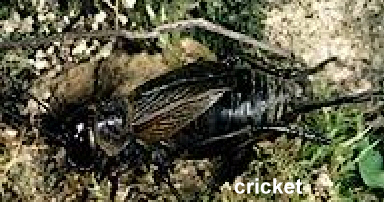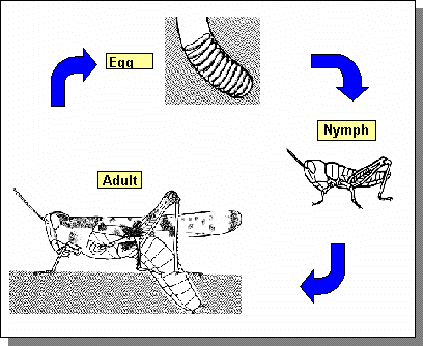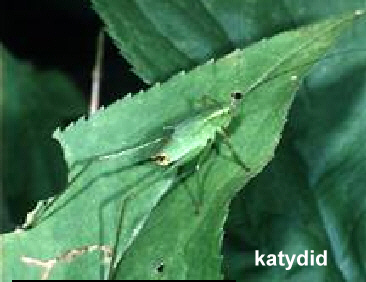HOME
ANIMALS
INSECTS
Locusts
What are locusts?
Locusts are insects belonging to the order Orthoptera. They are
identical in appearance to grasshoppers with which they share the
family Acrididae. The only difference between the two types of
insects is that locusts can exist in two different behavioral states
(solitary and gregarious) whereas grasshoppers do not. When the
population density is low locusts behave as individuals, much like
grasshoppers. However, when the population density is high locusts
form highly mobile gregariously behaving bands of nymphs or swarms of
adults. It is this change from one behavioral state to another, known
as phase change that makes locusts such devastating pests. Phase
change may be accompanied by changes in body shape and color, and in
fertility, survival and migratory behavior. These changes are so
dramatic in many species that the swarming and non-swarming forms
were once considered to be different species.
Shorthorned grasshoppers, also known as true grasshoppers, are named
for their relatively short antennae. A common species, the American
grasshopper, is about 4 inches long when fully grown. In the fall,
females lay their eggs in holes in the ground. The eggs hatch in the
spring, and the young reach maturity in July or August. When some
shorthorned grasshoppers reproduce too rapidly for their food supply
to support them, subsequent generations undergo extensive changes in
form and become migratory. Such shorthorned grasshoppers are known as locusts.
 The
true locust is one of over 5000 species of grasshopper. Locusts
travel in huge numbers capable of feeding on and destroying entire
fields of cultivated plants and any nearby vegetation. Approaching
swarms create an ominous hum and sometimes are large enough to block
out sunlight.
The
true locust is one of over 5000 species of grasshopper. Locusts
travel in huge numbers capable of feeding on and destroying entire
fields of cultivated plants and any nearby vegetation. Approaching
swarms create an ominous hum and sometimes are large enough to block
out sunlight.
Locust is the common name applied to a number of jumping insects and
especially to the true locusts, which are migratory grasshoppers. The
true locusts cause great damage to crops wherever they swarm. Control
measures include the spreading of poison bait and the plowing under
of locust eggs. Infestations threatening large regions of the United
States are combated with insecticides sprayed by planes and
truck-mounted mist blowers provided by joint federal-state programs.
Grasshopper is the common name for any of the winged orthopteran
insects with hind legs adapted for jumping. They include the
longhorned grasshoppers, pygmy grasshoppers, and shorthorned
grasshoppers, or locusts. They subsist on vegetation and are
distributed worldwide wherever vegetation grows.
Grasshoppers are 1 to 5 inches long when fully grown. They develop by
gradual metamorphosis: The nymph is initially wingless and gradually
comes to resemble the adult as it grows through progressive molts.
Only the adults can fly. Some species undergo seasonal color changes,
being green at some times and red or brown at others. Grasshoppers
are closely related to crickets and male grasshoppers make chirping
or stridulating noises similar to those produced by  crickets.
Females of several species also make sounds. Unlike true crickets
and longhorned grasshoppers, shorthorned grasshoppers chirp by
rubbing their hind legs or forewings against other parts of their
bodies. The eardrums of shorthorned grasshoppers are clear, circular
areas located on the abdomen at a point just behind the junction of
the hind legs with the body. The hearing organs of longhorned
grasshoppers and crickets are located on the forelegs.
crickets.
Females of several species also make sounds. Unlike true crickets
and longhorned grasshoppers, shorthorned grasshoppers chirp by
rubbing their hind legs or forewings against other parts of their
bodies. The eardrums of shorthorned grasshoppers are clear, circular
areas located on the abdomen at a point just behind the junction of
the hind legs with the body. The hearing organs of longhorned
grasshoppers and crickets are located on the forelegs.
Pygmy grasshoppers are the smallest grasshoppers and are
characterized by a greatly elongated dorsal shield, a backward
extension of the thorax. Longhorned grasshoppers are characterized by
antennae that extend beyond the hind end of the body when they are
folded back. Females usually lay their eggs in low bushes or in
crevices in the bark of trees. Longhorned grasshoppers include the
katydids (see Katydid); the meadow grasshoppers, which are slightly
less than 1 inch long; and the so-called Mormon cricket found in the
western United States, which was common near the early Mormon
settlement in Salt Lake City, Utah, and did much damage to crops there.
 Life
cycle of a locust
Life
cycle of a locust
Locusts pass through three main stages of development: egg, nymph
(hopper) and adult.
Locust eggs are laid in the soil. The female drills a hole into the
ground using her ovipositor and lays a 'pod' of eggs which is sealed
with froth. Locusts hatch from eggs as wingless nymphs.
Rainfall, which produces green vegetation, is necessary for nymphal
and adult survival, adult migration and/or egg development. Egg
laying usually follows either migration or rainfall.
How long it takes for a locust to reach maturity depends on the
species, conditions of the habitat and on temperature. In cool
weather, nymphs and adults often attempt to increase their body
temperature by basking in the sun.
Orthoptera
 Large
order of insects including the grasshoppers, locusts; katydids; and crickets
Large
order of insects including the grasshoppers, locusts; katydids; and crickets
The insects in this order have mouthparts fitted for biting, and they
are characterized by incomplete metamorphosis. The young, when first
hatched, closely resemble the adult insects except in size and the
absence of wings. The eggs are comparatively few in number and as a
rule are laid in specialized egg cases, although some orthopterans
deposit or scatter eggs without such cases. About 23,000 species are
known; many swarm in enormous numbers, as in the case of the
destructive migratory locusts. The ability to produce sounds of
distinct tones and rhythms by rubbing one part of the body upon
another is highly developed. Only the males of families that jump
have this ability in order to attract females. In the tropical forms,
the wings seem to be of little use as organs of flight, but they are
of striking value in ornamentation and in concealment.
Further Reading
http://www.csiro.au/news/mediarel/mr1999/mr9926.html
http://www.affa.gov.au/docs/animalplanthealth/plague/locustfiles/aboutlocusts1.htm
 The
true locust is one of over 5000 species of grasshopper. Locusts
travel in huge numbers capable of feeding on and destroying entire
fields of cultivated plants and any nearby vegetation. Approaching
swarms create an ominous hum and sometimes are large enough to block
out sunlight.
The
true locust is one of over 5000 species of grasshopper. Locusts
travel in huge numbers capable of feeding on and destroying entire
fields of cultivated plants and any nearby vegetation. Approaching
swarms create an ominous hum and sometimes are large enough to block
out sunlight. crickets.
Females of several species also make sounds. Unlike true crickets
and longhorned grasshoppers, shorthorned grasshoppers chirp by
rubbing their hind legs or forewings against other parts of their
bodies. The eardrums of shorthorned grasshoppers are clear, circular
areas located on the abdomen at a point just behind the junction of
the hind legs with the body. The hearing organs of longhorned
grasshoppers and crickets are located on the forelegs.
crickets.
Females of several species also make sounds. Unlike true crickets
and longhorned grasshoppers, shorthorned grasshoppers chirp by
rubbing their hind legs or forewings against other parts of their
bodies. The eardrums of shorthorned grasshoppers are clear, circular
areas located on the abdomen at a point just behind the junction of
the hind legs with the body. The hearing organs of longhorned
grasshoppers and crickets are located on the forelegs. Life
cycle of a locust
Life
cycle of a locust Large
order of insects including the grasshoppers, locusts; katydids; and crickets
Large
order of insects including the grasshoppers, locusts; katydids; and crickets